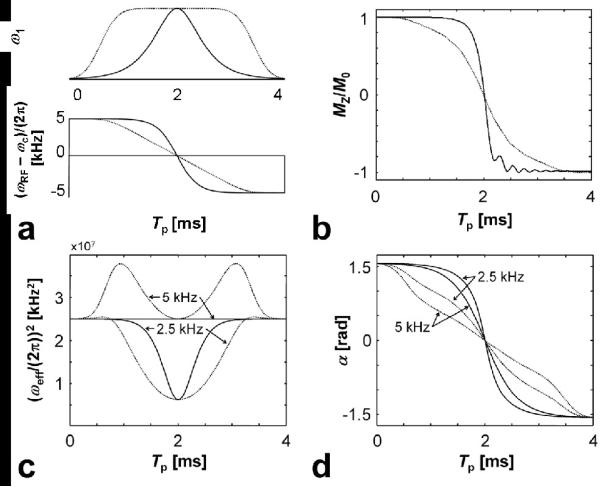Figure 2.
Properties of adiabatic full passage (AFP) pulses, namely the hyperbolic secant HS1 (solid lines) and HS4 (dotted lines) pulses. a) amplitude and frequency modulation functions., with Tp = 4 ms, R-value = 40, corresponding to B = 10 kHz, ; b) trajectories showing the inversion of the magnetization for the isochromat centered at the carrier frequency of the pulse. Note that during the AFP, the magnetization of each isochromat within the BW becomes inverted by the end of the pulse; c-d) evolution of α(t) and (ωeff/(2π))2 during the pulses. Since α(t) and ωeff/(2π))2 depend not only on the modulation functions but also on the pulse parameters, the cases corresponding to and 5 kHz are presented. Note that when , i.e. when , then ωeff/(2π))2 during the HS1 pulse becomes time-independent. This is because the known trigonometric identity ω2eff = A·[sech2(β(2t/Tp-1)) + tan2(β(2t/Tp-1))] = A.

